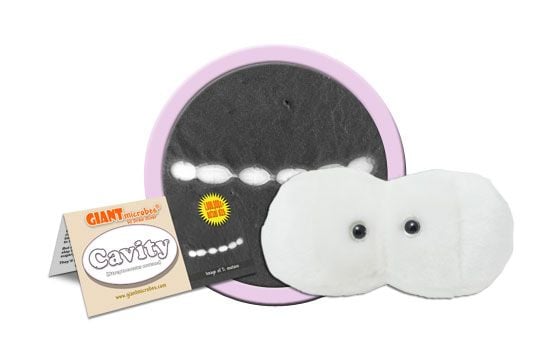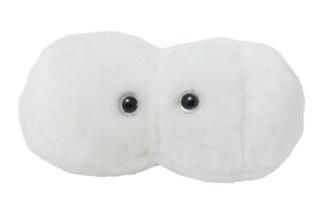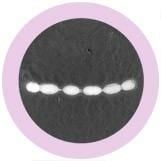Cavity (Streptococcus mutans)
Out of Stock
Product Details
Additional Information
| Sizes | Giantmicrobes are based on actual microbes, cells, organisms and other critters, only 1,000,000 times actual size! Gigantic (GG) 16-24" XL (XL) 10-15" Original (PD) 5-8" Keychain (KC) 2-4" with clip |
|---|---|
| Materials | Plush from all new materials. Stuffed with polyester fiber fill. Surface washable: sponge with water & soap, air dry. |
| Packaging | Each plush microbe includes a printed card with fun, educational and fascinating facts about the actual microbe or cell. |
| Safety | Every product meets or exceeds U.S. and European standards for safety. For ages 3 and up. |
All about Cavity (Streptococcus mutans)
FACTS: Everyone knows that sugar is bad for your teeth. But why is that so? Because Streptococcus mutans bacteria love to eat it!
S. mutans is the leading cause of tooth decay and a primary component of dental plaque. By eating sugars such as fructose (found in fruits), lactose (found in milk), and glucose (found in the starches of breads, pastas, cereals, and potatoes), S. mutans creates lactic acid that dissolves the minerals that make up your teeth. As these minerals dissolve, holes – or cavities – are created.
But like any sweet-tooth, S. mutans is most fond of the sugary sucrose found in cookies, cakes, candies, and soda! When sucrose is on the menu, S. mutans is able to produce not only acid, but also a sticky substance which helps it stay on your teeth – as plaque.
The more the plaque layer thickens and hardens, the more acid is produced and concentrated against your teeth, and the greater the risk of dental decay.
Because cavities are to a large extent a contagious disease (normally contracted by infants from family members when their baby teeth come in), scientists are actively working on vaccines to help prevent infection.
But in the meantime, the best thing you can do to help your teeth stay healthy and strong is to brush and floss regularly – and avoid sugary foods.
They’ll smile if you do!
| Description | Cavities occur from tooth decay (damage to the tooth). Acidic foods break down the enamel (coating) of the teeth and creates holes. These holes can get bigger and bigger the longer it goes untreated. |
|---|
| Symptoms | Some small cavities can have no symptoms while others can have sensitivity and pain in the area |
|---|
| Cure | The only way to cure a cavity is to have the damaged part of the tooth removed and have it filled. Cavity prevention is through teeth brushing and flossing. |
|---|
| Deadliness/Severity |
Cavities that go untreated can cause nerve and gum damage. Dentists recommend getting a tooth cleaning twice a year which helps prevent severe tooth decay and infections. |
|---|
| Infectiousness | There is no risk of passing cavities and they are not caused by any one item. |
|---|
| History | Mummy remains for 2,100 years ago in Egypt have been showing signs of severe tooth decay that led to infections. |
|---|
| Fascinating Facts |
Most cavities take place in between teeth because bacteria can hide better. Over 19% of children 2-19 have untreated cavities. 50% of children have experienced tooth decay by age 11. |
|---|






